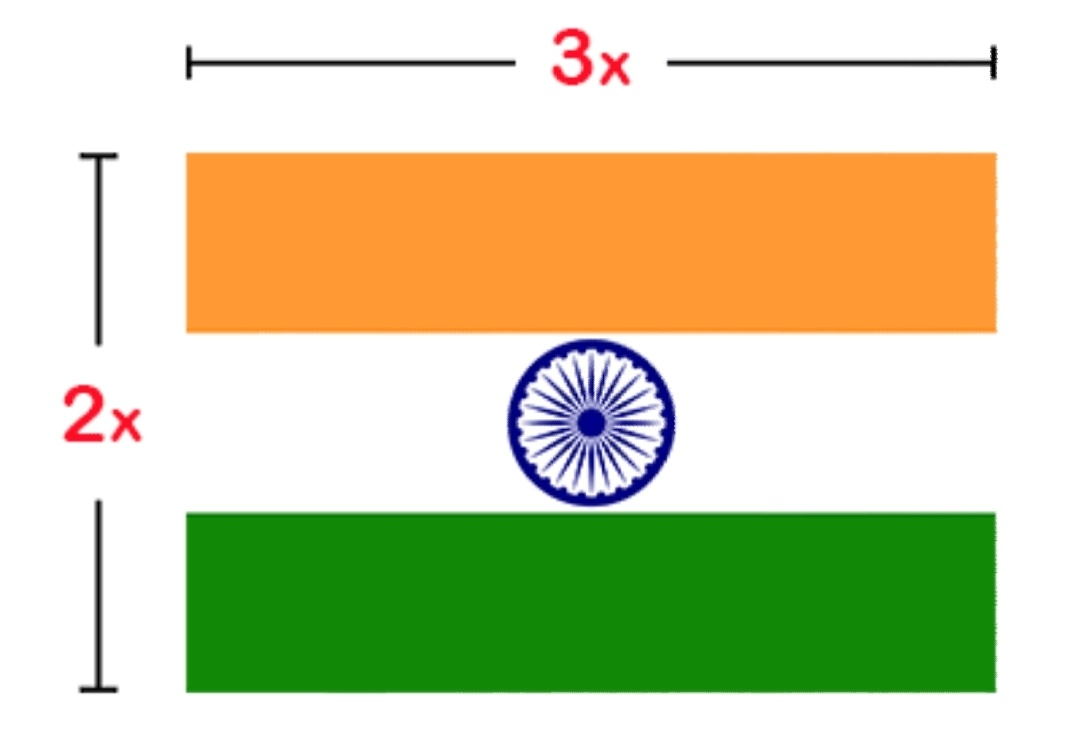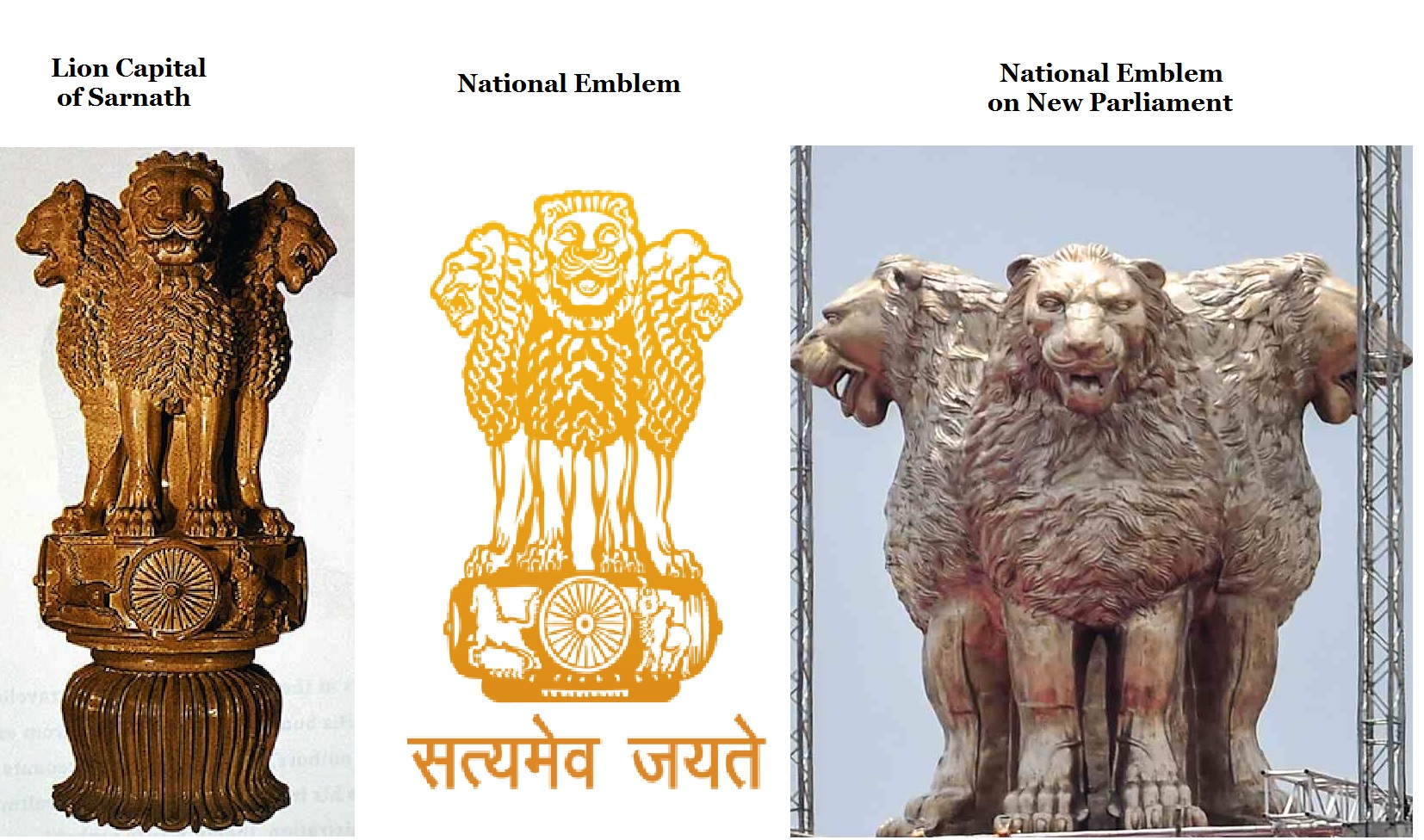
Chapter - 2: National Symbols | 08 Oct 2024
National Flag
- The National Flag of India consists of three rectangular panels of equal width.
- The top panel is India saffron (kesari), the bottom panel is India green, and the middle panel is white.
- The white panel contains the Ashoka Chakra design in navy blue at its center, with 24 equally spaced spokes.
- The Ashoka Chakra should be visible on both sides of the flag and can be screen printed, printed, stenciled, or embroidered.

- The National Flag is rectangular with a ratio of length to height (width) of 3:2.
- The design was adopted by the Constituent Assembly of India on July 22, 1947.
- Display of the National Flag is governed by the Emblems and Names (Prevention of Improper Use) Act, 1950, and the Prevention of Insults to National Honour Act, 1971.
- The Flag Code of India, 2002, consolidates laws, conventions, practices, and instructions regarding the flag's display.
- It replaced the previous 'Flag Code-India' and became effective on 26 January, 2002.
- According to the Flag Code of India, 2002, there are no restrictions on the display of the National Flag by the general public, private organisations, educational institutions, etc., except to the extent provided in the Emblems and Names (Prevention of Improper Use Act, 1950 and the Prevention of Insults to National Honour Act, 1971 and any other law enacted on the subject.
State Emblem

- The State Emblem of India is derived from the Lion Capital of Ashoka at Sarnath.
- The original Lion Capital features four lions mounted back to back on a circular abacus, with sculptures of an elephant, a galloping horse, a bull, and a lion separated by Dharma Chakras on the frieze.
- The Lion Capital rests on a bell-shaped lotus.
- The adaptation for the State Emblem of India includes three lions mounted on the abacus with a Dharma Chakra in the centre, a bull on the right, and a galloping horse on the left.
- The bell-shaped lotus from the original was omitted.
- The motto "Satyameva Jayate" (Truth alone Triumphs), written in Devanagari script, is located below the profile of the Lion Capital and is part of the State Emblem.
- The State Emblem of India was adopted on January 26, 1950.
- The official seal of the Government of India is contained within the State Emblem.
- The usage of the State Emblem is regulated by the State Emblem of India (Prohibition of Improper Use) Act, 2005, and The State Emblem of India (Regulation of Use) Rules, 2007, along with amendments.
National Anthem
- The song "Jana-gana-mana" was originally composed in Bangla by Rabindranath Tagore.
- It was adopted as the National Anthem of India in its Hindi version by the Constituent Assembly on January 24, 1950.
- The first public performance of the song was on December 27, 1911, at the Calcutta Session of the Indian National Congress.
- The song consists of five stanzas, with the first stanza containing the full version of the National Anthem.
- The full version of the National Anthem has a playing time of approximately 52 seconds.
- A shorter version, comprising the first and last lines of the National Anthem, is played on certain occasions, lasting approximately 20 seconds.
National Song
- The national song of India is "Vande Mataram".
- It was composed in Sanskrit by Bankimchandra Chatterji.
- "Vande Mataram" served as a source of inspiration during India's struggle for freedom.
- It holds equal status with "Jana-gana-mana," the national anthem.
- It was first sung at a political event during the 1896 session of the Indian National Congress.
National Calendar
- The National Calendar based on the Saka Era, with Chaitra as its first month and a normal year of 365 days was adopted from March 22, 1957 along with the Gregorian calendar for the following official purposes :
- Gazette of India
- News broadcast by All India Radio
- Calendars issued by the Government of India
- Government communications addressed to the public.
- Dates of the National Calendar have a permanent correspondence with dates of the Gregorian Calendar, 1 Chaitra falling on March 22 normally and on March 21 in leap year.
National Animal and Bird
- Tiger and Peacock have been re-notified as national animal and the national bird of India respectively.
- The Wildlife Division of the then Ministry of Environment and Forests re-notified the same in 2011.


